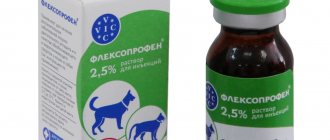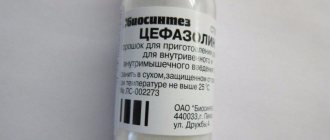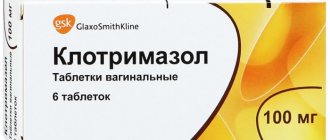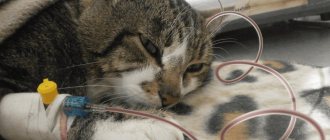Brief characteristics of the drug
- Name of pharmacological drug: Amlodipine
- Latin name of the drug: Amlodipinum
(genitive
Amlodipini
) - Chemical name of the drug: The drug is a dihydropyridine derivative. 2-[(2-amino ethoxy) methyl]-4-(2-chlorophenyl)-1,4-dihydro-6-methyl-3,5-pyridine dicarboxylic acid 3-ethyl 5-methyl ether besylate or maleate. II generation calcium antagonist
- Gross formula of active substance: C20H25ClN2O5
- Pharmacological group: Inhibitors (Blockers) of calcium channels or calcium antagonists
- Physico-chemical characteristics: white crystalline powder, moderately soluble in ethyl alcohol, slightly soluble in water
- Object of application: humans, dogs, cats
- Pharmacological effects - hypotensive, vasodilating, antianginal, antispasmodic
- Where to buy: medical pharmacies
- Release form: tablets of 5 and 10 mg
- Analogues, synonyms of amlodipine (trade name)
: Amlodac, Amlovas, Acridipine, Amlodipine-Zentiva, Amlodipine-Sandoz, Amlodigamma, Amlodipine-Chaikapharma, Amlodipine-Cardio, Amlodipine-Borimed, Amlodipine-Biocom, Amlodipine-Teva, Amlodipine-Prana, Amlodipine besilate, Amlonorm, Amlodipine besylate, Amlodipine maleate, Amlodipharm, Omelar Cardio, Amlong, Amlocard-Cardilopin, Sanovel, Amlorus, Amlotop, Vero-Amlodipine, Karmagip, Kalchek, Cordi Cor, Corvadil, Normodipin, Norvasc, Stamlo, Tenox
Goal of therapy
It is usually not possible to restore normal blood pressure values when treating hypertension. The veterinarian's goal is to reduce blood pressure by 30-50 mmHg. Art. With oscillometric methods of measuring pressure, systolic, mean or diastolic pressure is taken into account to assess the effectiveness of therapy. Doppler blood pressure methods use systolic blood pressure to measure the effectiveness of treatment. In general, Doppler sensors are most suitable for measuring blood pressure in both cats and dogs (see previous article).
Pharmacological features of amlodipine
Pharmacological action - antianginal, vasodilating, hypotensive, antispasmodic.
Amlodipine
conjugates with dihydropyridine receptors of blood vessels and cardiomyocytes, inhibits calcium channels, blocks the transmembrane flow of Ca++ ions into the cell. The drug affects predominantly the smooth muscle cells of the vascular wall, with a slight effect on cardiomyocytes.
Amlodipine has a dose-dependent, prolonged, hypotensive effect.
The ability to lower blood pressure is associated with a direct relaxing effect on vascular myocytes, which reduces overall vascular resistance to blood flow.
In humans, the drug reduces the symptoms of myocardial ischemia. This effect is due to peripheral vasodilation and a decrease in total peripheral vascular resistance with a relatively stable heart rate.
Due to the weakening of the load on the myocardium of the left ventricle, its need for Oxygen decreases. Amlodipine besilate dilates large coronary arteries, both affected and not affected by atherosclerosis, which increases the transport of oxygen to the heart muscle. The active substance has virtually no effect on the sinoatrial and sinus node atrioventricular conduction.
The drug increases sodium excretion, diuresis, glomerular filtration rate, and also inhibits platelet aggregation. The pharmacological effect is formed 60–120 minutes after oral administration and lasts for 24 hours. The drug acts gradually, has a prolonged effect, and has a gradual decrease in blood pressure. Amlodipine practically does not cause reflex stimulation of the sympathetic division of the autonomic nervous system. In case of arterial hypertension, it reduces the risk and degree of formation of left ventricular hypertrophy.
In people with coronary heart disease, the drug has a cardioprotective and antiatherosclerotic effect. It has been proven that amodipine besilate does not increase the risk of sudden cardiac death or progression of heart failure in patients suffering from congestive heart failure (NYHA class III–IV) during therapy with digoxin, angiotensin-converting enzyme inhibitors and diuretics.
The drug is almost completely adsorbed in the gastrointestinal tract slowly, regardless of food intake.
The bioavailability of the drug is 60–65%, there is a “first pass” phenomenon through the liver). Maximum plasma concentrations are achieved 6–12 hours after oral administration. Amlodipine binds to plasma proteins by 97–98%. With continuous use, equilibrium plasma concentrations are achieved within a week. The volume of distribution of the active substance is 20 l/kg. Penetrates the blood-brain barrier. In the liver, the drug is biotransformed with the synthesis of inactive metabolites. The metabolism of amlodipine in the body is two-phase: the first phase is not long, and the second lasts up to 50 hours. The total clearance of the drug is 0.5 l/minute. It is excreted by the kidneys by 60% in the form of metabolites, and 10% in its native form, by the liver by 20–25% in the form of metabolites, and by the mammary gland during lactation. The half-life of the drug in renal failure does not change; in elderly patients, as well as in liver failure, it is prolonged.
Recommendations
- Animals with clearly elevated blood pressure (systolic pressure greater than 200 mmHg and/or diastolic pressure greater than 120 mmHg) are considered patients for antihypertensive treatment.
- Animals with elevated blood pressure (systolic pressure 170-200 mmHg and/or diastolic pressure 100-120 mmHg) and symptoms of systemic hypertension are also patients for antihypertensive treatment.
- Treatment options may also be considered for asymptomatic animals with elevated blood pressure (systolic pressure 170-200 mmHg and/or diastolic pressure 100-120 mmHg).
- Animals without clinical symptoms and slightly elevated blood pressure (systolic pressure 120-170 mmHg and/or diastolic pressure 80-100 mmHg) should not receive antihypertensive therapy.
- Animals with normal blood pressure or those whose blood pressure has not been measured should not be treated with antihypertensive drugs.
Method of use of amlodipine in veterinary medicine and its dosage for dogs and cats
Amlodipine for dogs and cats
prescribed orally. Dogs: 0.1-0.2 mg/kg 2 times a day or 0.2-0.4 mg/kg once a day. For cats, the drug is prescribed: at a dose of 0.625-1.25 mg/cat, once every two days (every 48 hours).
Contraindications
- Acute myocardial infarction (period of early convalescence)
- Severe arterial hypotension
- Shock
- Allergic reactions and hypersensitivity (history of allergies to other representatives of dihydropyridines)
Duration of treatment
If the diagnosis reveals that hypertension is associated with chronic kidney disease, then antihypertensive therapy should continue throughout the life of the animal with periodic changes in dosage depending on the results of blood pressure measurements.
Hypertension caused by hyperthyroidism and hyperadrenocorticism can be eliminated after 1-3 months of treatment of the underlying disease, if there is no concurrent chronic renal failure. But sometimes dogs with controlled hyperadrenocorticism remain hypertensive.
For other patients, it is impossible to predict the duration of treatment, but sometimes they need to be treated for life. Periodic changes in dosage are shown depending on the results of pressure measurements.
Amlodipine is used with restrictions
- unstable angina
- heart failure
- severe aortic stenosis
- liver failure
- young age
Use during pregnancy and breastfeeding
It is considered possible to use amlodipine besilate during pregnancy. In this case, the doctor needs to determine whether the expected positive effect of treatment will exceed the hypothetical risk to the embryo.
Breastfeeding should not be carried out during drug therapy.
Side effects of the drug "Amlodipine"
According to the instructions for use of amlodipine in humans, dogs and cats, a number of side effects have been established.
From the nervous system and sense organs:
- drowsiness
- fatigue
- dizziness
- asthenia
- headache
- fatigue
- visual disturbances
- mood change
From the gastrointestinal tract:
- abdominal pain
- dyspepsia
- nausea
- diarrhea or constipation
- jaundice
From the blood (hemostasis, hematopoiesis), heart and blood vessels:
- heartbeat
- skin hyperemia
- arrhythmic syndrome (ventricular tachycardia, sinus bradycardia, atrial flutter)
- arterial hypotension
- chest pain
From the respiratory tract:
- dyspnea
From the urinary and reproductive tract:
- peripheral edema
- impotence
- pollakiuria
For the skin and outer integument:
- rash
- erythema multiforme
- itching
From the musculoskeletal tract:
- myalgia
- arthralgia
- pain in limbs
- paresthesia
Other:
- gynecomastia
- gingival hyperplasia
- increased activity of alanine and aspartic transaminases in blood serum
Interaction of amlodipine with other antihypertensive drugs
Amodipine besilate
combines well with the main groups of drugs used to treat arterial hypertension, namely: diuretics, β-blockers, angiotensin-converting enzyme inhibitors, nitrates and hypoglycemic agents.
Nonsteroidal anti-inflammatory drugs (in particular indomethacin) neutralize the ability of amlodipine to reduce arterial blood pressure due to inhibition of natriuresis and renal synthesis of prostaglandins.
Inhalational general anesthesia (in particular hydrocarbon derivatives), quinidine, amiodarone, and other calcium channel blockers may potentiate the effects of amlodipine besilate.
Overdose
Overdose symptoms:
- excessive peripheral vasodilation
- tachycardia
- long-term and pronounced decrease in blood pressure levels
Therapeutic measures:
- probing and gastric lavage
- administration of enterosorbents (for example, activated carbon)
- it is necessary to monitor the functional state of the heart and respiratory tract organs, control the volume of circulating blood and diuresis
- bringing the patient into a horizontal body position with raised lower limbs
- supportive and symptomatic treatment, intravenous infusion of crystalloid solutions, the use of dopamine, calcium gluconate, phenylephrine. The use of hemodialysis is not justified
Precautions when prescribing Amlodipine
The above drug is prescribed with caution to persons who operate complex machinery and vehicles, as well as work associated with increased concentration.
Analogs, synonyms of amlodipine (trade names)
Synonyms (analogues): Amlovas, Acridipine, Amlodac, Amlodipine-Zentiva, Amlodigamma, Amlodipine-Sandoz, Amlodipine-Cardio, Amlodipine-Borimed, Amlodipine-Biocom, Amlodipine-Teva, Amlodipine-Prana, Amlodipine besilate, Amlodipine-Chaikafarma, Amlodipine besilate , Amlodipine maleate, Amlodipharm, Amlong, Amlocard-Cardilopin, Amlonorm, Sanovel, Amlorus, Amlotop, Vero-Amlodipine, Kalchek, Corvadil, Karmagip, Cordi Cor, Normodipin, Norvasc, Stamlo, Omelar Cardio, Tenox
^Top
Negative effects
If the medication is used correctly and the dosages recommended by the veterinarian are followed, treatment of cats with Amlodipine proceeds well and does not provoke a negative reaction. Otherwise, while taking antihypertensive pills, the following undesirable effects may develop:
- headache;
- constant desire to sleep;
- fatigue, increased fatigue, vertigo;
- neuropsychic weakness;
- decreased visual function;
- mood swings;
- painful abdominal discomfort, nausea;
- stool disorders;
- cardiopalmus;
- pain in the chest;
- itching, rash, swelling;
- convulsions;
- pressure drop.
If you observe a negative reaction of the cat’s body to taking Amlodipine, you will need to stop treatment and wait for the condition to normalize; usually the side symptoms go away on their own and do not require taking therapeutic measures.
What to replace it with?
Instead of this drug, Normodipine can be selected for the animal.
If for some reason the cat cannot be treated with Amlodipine, then veterinarians will instead prescribe a drug that has a similar effect on the pet’s body. And most often it is replaced with the following medications:
- "Normodipin";
- "Corvadil";
- "Amlodak";
- "Cardilopin";
- "Amlovas";
- "Tenox";
- "Stamlo";
- "Amlong";
- "Sanovel";
- "Norvask";
- "Amlodifarm";
- "Omelar Cardio".
Instructions:
Clinical and pharmacological group
01.017 (Calcium channel blocker. Antianginal and antihypertensive drug.)
Release form, composition and packaging
The tablets are white or almost white, round, biconvex, with a chamfer and a score on one side.
| 1 tab. | |
| amlodipine maleate | 6.42 mg, |
| which corresponds to the content of amlodipine | 5 mg |
Excipients: microcrystalline cellulose, pregelatinized starch, sodium carboxymethyl starch, colloidal anhydrous silicon dioxide, magnesium stearate.
10 pieces. - blisters (3) - cardboard packs. 10 pcs. - blisters (9) - cardboard packs.
The tablets are white or almost white, round, biconvex, with a chamfer and a score on one side.
| 1 tab. | |
| amlodipine maleate | 12.84 mg, |
| which corresponds to the content of amlodipine | 10 mg |
Excipients: microcrystalline cellulose, pregelatinized starch, sodium carboxymethyl starch, colloidal anhydrous silicon dioxide, magnesium stearate.
10 pieces. - blisters (3) - cardboard packs. 10 pcs. - blisters (9) - cardboard packs.
pharmachologic effect
Second generation slow calcium channel blocker, dihydropyridine derivative. Has antianginal and hypotensive effects. By binding to dihydropyridine receptors, it blocks calcium channels, reduces the transmembrane transition of calcium ions into the cell (more into vascular smooth muscle cells than into cardiomyocytes).
The antianginal effect is due to the expansion of coronary and peripheral arteries and arterioles. For angina pectoris, it reduces the severity of myocardial ischemia; by expanding peripheral arterioles, it reduces peripheral vascular resistance, reduces preload on the heart, and reduces myocardial oxygen demand. Expands the main coronary arteries and arterioles in unchanged and ischemic areas of the myocardium, increases the supply of oxygen to the myocardium (especially with vasospastic angina); prevents the development of spasm of the coronary arteries (including those caused by smoking). In patients with stable angina, a single daily dose increases exercise tolerance, slows down the development of the next attack of angina and ischemic depression of the ST segment, reduces the frequency of angina attacks and nitroglycerin consumption.
It has a long-term dose-dependent hypotensive effect. The hypotensive effect is due to a direct vasodilating effect on vascular smooth muscle. For arterial hypertension, a single dose provides a clinically significant reduction in blood pressure over 24 hours (with the patient lying and standing).
Reduces the degree of left ventricular myocardial hypertrophy, has an antiatherosclerotic and cardioprotective effect in ischemic heart disease. Does not affect myocardial contractility and conductivity, does not cause a reflex increase in heart rate. Inhibits platelet aggregation, increases glomerular filtration rate, and has a weak natriuretic effect.
In diabetic nephropathy, it does not increase the severity of microalbuminuria. It does not have any adverse effect on metabolism and plasma lipid concentrations and can be used in the treatment of patients with bronchial asthma, diabetes mellitus and gout.
A significant decrease in blood pressure is observed after 6-10 hours, the duration of the effect is 24 hours. With long-term therapy, the maximum decrease in blood pressure occurs 6-12 hours after taking amlodipine orally. If amlodipine is discontinued after long-term treatment, the effective reduction in blood pressure persists for 48 hours after the last dose. Then blood pressure levels gradually return to the original level over 5-6 days.
Pharmacokinetics
Suction
After oral administration, amlodipine is slowly absorbed from the gastrointestinal tract. The average absolute bioavailability is 64%, Cmax is observed after 6-9 hours.
Distribution
Css is achieved after 7-8 days of regular use. Food intake does not affect the absorption of amlodipine.
The average Vd is 21 l/kg body weight. This indicates that most of the drug is in the tissues, and relatively less is in the blood. Most of the drug in the blood (95%) binds to plasma proteins.
Penetrates through the BBB.
Metabolism
Amlodipine undergoes slow but active metabolism in the liver with no significant first-pass effect. Metabolites do not have significant pharmacological activity.
Removal
After a single oral dose, T1/2 varies from 31 to 48 hours; with repeated doses, T1/2 is approximately 45 hours. About 60% of the dose taken orally is excreted by the kidneys, mainly in the form of metabolites (10% unchanged), 20-25% - through the intestines, as well as with breast milk. The total clearance of amlodipine is 0.116 ml/s/kg (7 ml/min/kg, 0.42 l/h/kg).
Pharmacokinetics in special clinical situations
In elderly patients (over 65 years of age), the elimination of amlodipine is slower (T1/2 is 65 hours) compared to younger patients, but this difference is not clinically significant.
With long-term use in patients with liver failure, T1/2 increases to 60 hours and an increase in drug accumulation will be observed.
Renal failure does not significantly affect the kinetics of amlodipine. Amlodipine is not removed by hemodialysis.
Dosage
The drug is prescribed orally.
The initial dose for arterial hypertension and angina pectoris is 5 mg 1 time / day. The maximum dose is 10 mg 1 time/day. The maintenance dose can be 2.5-5 mg/day.
For stable angina pectoris and vasospastic angina, the drug is prescribed at a dose of 5-10 mg 1 time / day. To prevent angina attacks - 10 mg/day.
In patients with impaired liver function, Tenox is prescribed with caution as an antihypertensive agent at an initial dose of 2.5 mg, and as an antianginal agent - 5 mg.
In patients with renal failure, no change in dosage regimen is required.
In elderly patients, T1/2 may increase and amlodipine clearance may decrease; no dose change is required, but more careful clinical monitoring is required.
No dose change is required when administered concomitantly with thiazide diuretics, beta-blockers and ACE inhibitors.
Overdose
Symptoms: excessive peripheral vasodilation with a pronounced and possibly prolonged decrease in blood pressure, collapse, shock.
Treatment: gastric lavage, administration of activated charcoal, maintaining the function of the cardiovascular system, monitoring indicators of heart and lung function, elevated, above head level, position of the lower extremities, control of blood volume and diuresis. To restore vascular tone, use vasoconstrictors (in the absence of contraindications to their use); in order to eliminate the consequences of blockade of calcium channels - intravenous administration of calcium gluconate. Hemodialysis is not effective.
Drug interactions
In the treatment of arterial hypertension, simultaneous use of amlodipine with thiazide diuretics, alpha-blockers, beta-blockers or ACE inhibitors is possible. In patients with stable angina, the drug can be combined with other antianginal agents, for example, long-acting nitrates, beta-blockers or sublingual nitrates.
Amlodipine can be used simultaneously with NSAIDs (especially indomethacin), antibacterial agents and oral hypoglycemic agents.
It is possible to enhance the antianginal and hypotensive effect of calcium channel blockers when used together with thiazide and loop diuretics, verapamil, ACE inhibitors, beta-blockers and nitrates, as well as enhance their hypotensive effect when used together with alpha1-blockers, antipsychotics.
Although negative inotropic effects have not generally been observed in amlodipine studies, some calcium channel blockers may potentiate the negative inotropic effects of antiarrhythmic drugs that cause QT prolongation (eg, amiodarone and quinidine).
A single dose of sildenafil at a dose of 100 mg does not affect the pharmacokinetic parameters of amlodipine in patients with essential hypertension.
Repeated use of amlodipine at a dose of 10 mg and atorvastatin at a dose of 80 mg is not accompanied by significant changes in the pharmacokinetics of atorvastatin.
Amlodipine with single and repeated use in a dose of 10 mg does not affect the pharmacokinetics of ethanol.
Antiviral agents (ritonavir) increase plasma concentrations of calcium channel blockers, incl. amlodipine.
Isoflurane enhances the hypotensive effect of dihydropyridine derivatives.
Calcium supplements can reduce the effect of calcium channel blockers.
When amlodipine is used together with lithium preparations, it is possible to increase the manifestation of neurotoxicity (nausea, vomiting, diarrhea, ataxia, tremor, tinnitus).
Amlodipine does not change the pharmacokinetics of cyclosporine.
Amlodipine has no effect on the serum concentration of digoxin and its renal clearance.
Does not significantly affect the effect of warfarin (prothrombin time).
Cimetidine does not affect the pharmacokinetics of amlodipine.
In in vitro studies, amlodipine does not affect the binding of digoxin, phenytoin, warfarin and indomethacin to blood proteins.
A simultaneous single dose of 240 mg of grapefruit juice and 10 mg of amlodipine orally is not accompanied by a significant change in the pharmacokinetics of amlodipine.
Use during pregnancy and lactation
Amlodipine has not been shown to be teratogenic in animal studies, but there is no clinical experience with its use during pregnancy and lactation. Therefore, Tenox should not be prescribed during pregnancy and lactation, as well as in women of childbearing age if they do not use reliable methods of contraception.
Side effects
Determination of the frequency of side effects (WHO): very often (>1/10), often (from>1/100 to <1/10), sometimes (from>1/1000 to <1/100), rarely (from> 1/10,000 to <1/1000), very rare (<1/10,000, including isolated reports).
From the cardiovascular system: often - palpitations, marked decrease in blood pressure, orthostatic hypotension, peripheral edema (swelling of the ankles and feet), flushing of the facial skin; sometimes - excessive decrease in blood pressure, orthostatic hypotension, vasculitis, shortness of breath; rarely - development or worsening of heart failure; very rarely - migraine, syncope. Some adverse effects observed in individual patients cannot be differentiated from symptoms of the natural course of the underlying disease: myocardial infarction, arrhythmias (very rarely - bradycardia, ventricular tachycardia and atrial fibrillation), chest pain.
From the central nervous system and peripheral nervous system: often - headache, dizziness, drowsiness, fatigue; sometimes - tremor, insomnia, emotional lability, unusual dreams, nervousness, depression, anxiety, paresthesia; rarely - convulsions, apathy, agitation; very rarely - ataxia, amnesia, asthenia, general malaise, peripheral neuropathy.
From the digestive system: often - nausea, abdominal pain; sometimes - vomiting, change in bowel habits (including constipation), flatulence, anorexia, thirst; rarely - increased appetite; very rarely - dyspepsia, diarrhea, gastritis, pancreatitis, hyperbilirubinemia, gingival hyperplasia, dry mouth, increased activity of liver transaminases, hepatitis, jaundice (due to cholestasis).
From the genitourinary system: sometimes - gynecomastia, pollakiuria, painful urge to urinate, nocturia; very rarely - impotence, dysuria, polyuria.
Dermatological reactions: sometimes - alopecia; rarely - dermatitis; very rarely - a disorder of skin pigmentation.
Allergic reactions: sometimes - skin itching, rash (including erythematous, maculopapular rash); very rarely - urticaria, angioedema, erythema multiforme.
From the musculoskeletal system: sometimes - arthralgia, muscle cramps, myalgia, back pain, arthrosis; rarely - myasthenia gravis; very rarely - muscle cramps.
From the senses: sometimes - ringing in the ears, diplopia, disturbance of accommodation, xerophthalmia, conjunctivitis, pain in the eyes, perversion of taste; very rarely - parosmia.
Other: sometimes - increase/decrease in body weight, chills, nosebleeds, rhinitis, increased sweating; very rarely - thrombocytopenic purpura, thrombocytopenia, leukopenia, hyperglycemia, increased sweating, cold sticky sweat (due to arterial hypotension), cough.
Storage conditions and periods
List B. The drug should be stored out of the reach of children at a temperature not exceeding 30°C. Shelf life: 4 years.
Indications
- arterial hypertension (as monotherapy or in combination with other antihypertensive drugs);
- stable angina pectoris and vasospastic angina (Prinzmetal angina) (as monotherapy or in combination with other antianginal drugs).
Contraindications
- severe arterial hypotension (systolic blood pressure less than 90 mm Hg);
- collapse;
- cardiogenic shock;
- unstable angina (with the exception of Prinzmetal's angina);
- clinically significant aortic stenosis;
- pregnancy;
- lactation (breastfeeding);
- children under 18 years of age (efficacy and safety have not been established);
- hypersensitivity to the components of the drug;
- hypersensitivity to other dihydropyridine derivatives.
The drug should be used with caution in case of impaired liver function, CVS (severe bradycardia, tachycardia), chronic heart failure of non-ischemic etiology of functional class III-IV according to the NYHA classification, mild or moderate arterial hypotension, aortic stenosis, mitral stenosis, hypertrophic obstructive cardiomyopathy, in acute myocardial infarction (and within 1 month after myocardial infarction), in elderly patients.
special instructions
While using the drug, it is necessary to control the patient’s body weight, prescribe an appropriate diet (monitor sodium intake), as well as maintain dental hygiene and frequent visits to the dentist (to prevent pain, bleeding and gum growth).
Patients with low body weight or short stature, patients with severe liver dysfunction may require a lower dose of the drug.
If liver function is impaired, an increase in T1/2 of amlodipine is also possible. Therefore, patients with impaired liver function should prescribe Tenox with caution.
The effectiveness and safety of the drug in hypertensive crisis have not been established.
Impact on the ability to drive vehicles and operate machinery
There have been no reports of the effect of Tenox on the ability to drive vehicles or operate machinery. However, some patients, mainly at the beginning of treatment, may experience drowsiness and dizziness. If they occur, the patient must be careful when driving a car and working with complex mechanisms.
Use for renal impairment
When prescribing the drug to patients with renal failure, no change in dosage regimen is required.
Use for liver dysfunction
Prescribe the drug with caution in case of liver dysfunction.
Conditions for dispensing from pharmacies
The drug is available with a prescription.










